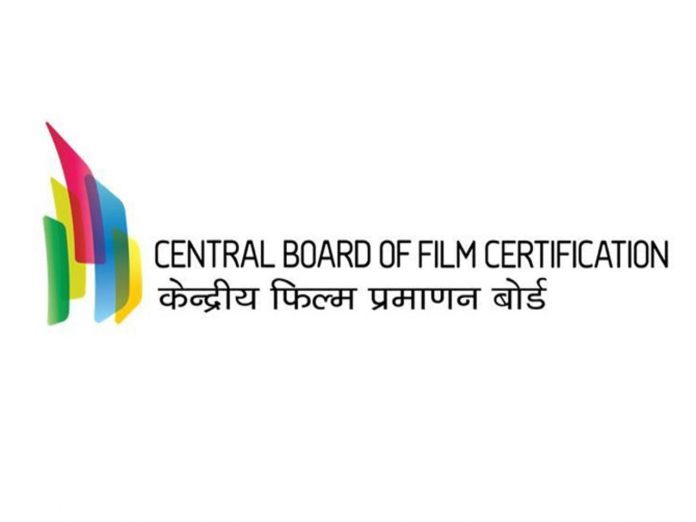Six film trade associations have sent the I & B ministry their joint representation on the proposed amendments to the Cinematograph Act, 1952. Broadly speaking, it has taken strong objection to the unlimited revisionary power sought to be provided to the Central government with respect to films already certified. Under these powers, the Centre can cancel the CBFC certificate of any film whenever it deems fit.
The proposed amendments include the following:
(a) Sub-division of ‘UA’ film certification category into further categories of ‘UA 7+’, ‘UA 13+’ and ‘UA 16+’.
(b) Extending the validity of the film certificate from 10 (ten) years to perpetuity.
(c) Providing the Central government with a revisionary power with respect to films already certified.
(d) Prohibiting unauthorised recording of any film without the prior written authorisation of the author (as defined in the Copyright Act, 1957).
(e) Penal provisions for contravention of (d) above — including imprisonment for a term of not less than 3 (three) months but not exceeding 3 (three) years and a fine not less than 3 (three) lakh rupees but which can also extend to 5% of the audited gross production or both.
The joint representation has welcomed the introduction of provisions relating to prohibition of the unauthorised recording of any film and the inclusion of penal provisions for deterring any act of piracy. This, the associations have added, is a much-needed protection which will go a long way in fighting the menace of piracy which is plaguing the Indian film industry today.
As regards the sub-division of the ‘UA’ category of certification into age-based categories, such as ‘UA 7+’, ‘UA 13+’, and ‘UA 16+’, in addition to the already existing categories of ‘U’ (universal i.e. for all ages), ‘S’ (for specified groups of people), and ‘A’ (adults only), the representation states that the basis for distinguishing between content that is appropriate for an adult audience (‘A’) and that which is appropriate for people that are below the age of 18 (‘U’/’UA’), has been tested and seems to have been widely accepted within the filmmakers’ community as also by the CBFC. It adds, the factors to be considered in order to sub-divide this classification on the basis of age groups of 7, 13 and 16, is unprecedented. Accordingly, while the principle of such classification is welcome, it is requested by the associations that the criteria for making such classification ought to be clear and also be made available in the public domain, in order for their members and other filmmakers to make informed choices/decisions accordingly. It is feared that in a scenario where the producer/filmmaker does not agree with the age-appropriate certification given or the film is subject to a reassessment after the certification, the option of going to the Film Certification Appellate Tribunal (FCAT) is no longer available (as the FCAT was abolished by the Centre in April) and the aggrieved parties would have to approach the appropriate high court for redressal, which process may take a long time. In this regard, the representation has pointed out that the British Board of Film Classification, which follows an age-based classification system has a methodology to determine such criteria, which is discussed and explained at https://www.bbfc.co.uk/about-classification/classification-guidelines. Perhaps, there can be a consideration of such criteria, says the representation, as applicable to India, before the age-based classification, contemplated in the proposed amendments, is notified or made operational.
It is feared that in a scenario where the producer/ filmmaker does not agree with the age-appropriate certification given or the film is subject to a reassessment after the certification, the option of going to the Film Certification Appellate Tribunal (FCAT) is no longer available (as the FCAT was abolished by the Centre in April) and the aggrieved parties would have to approach the appropriate high court for redressal, which process may take a long time.
For understanding the strong objections of the film industry to the revisionary power given to the Central government with respect to certified films, the current wordings of the Act must be first examined.
Section 6(1) of the Act currently states:
“Notwithstanding anything contained in this Part, the Central government may, of its own motion, at any stage, call for the record of any proceeding in relation to any film which is pending before, or has been decided by, the Board, or as the case may be, decided by the Tribunal (but not including any proceedings in respect of any matter which is pending before the Tribunal) and after such inquiry, into the matter as it considers necessary, make such order in relation thereto as it thinks fit, and the Board shall dispose of the matter in conformity with such order:
“Provided that no such order shall be made prejudicially affecting any person applying for a certificate or to whom a certificate has been granted, as the case may be, except after giving him an opportunity for representing his views in the matter.
“Provided further that nothing in this sub-section shall require the Central government to disclose any fact which it considers to be against public interest to disclose.”
The industry’s representation to the I & B ministry has stated that pursuant to this provision, the Central government was given broad powers to call for the record of any proceeding (pending or concluded) and make any orders as it thought fit. It adds:
As has been highlighted in the reasons for considering the insertion of the proviso, this broad revisional power was challenged (amongst other issues) before the Karnataka high court and subsequently was heard before the Supreme Court in the case of Union of India v. K.M. Shankarappa. The SC expressed its displeasure with the Central government seeking to “exercise power of review or revision over the decisions of the Board or the Tribunal”. The SC went onto hold that “…The executive has to obey judicial orders. Thus, section 6(1) is a travesty of the rule of law which is one of the basic structures of the Constitution… The executive cannot sit in an appeal or review or revise a judicial order. The Appellate Tribunal consisting of experts decides matters judicially. A secretary and/or minister cannot sit in appeal or revision over those decisions. At the highest, the government may apply to the Tribunal itself for a review, if circumstances so warrant. Once an expert body has considered the impact of the film on the public and has cleared the film, it is no excuse to say that there may be a law and order situation. It is for the state government concerned to see that law and order is maintained. In any democratic society, there are bound to be divergent views. Merely because a small section of the society has a different view, from that as taken by the Tribunal, and choose to express their views by unlawful means would be no ground for the executive to review or revise a decision of the Tribunal…”.
REVISIONARY POWERS UNCONSTITUTIONAL: SC
The representation goes on to add that it is clear from the aforementioned SC judgement pronounced on November 28, 2000, that revisionary powers were unconstitutional and hence the apex court struck down the operation of such powers. The SC judgement not only opined upon the quasi-judicial nature of the FCAT’s jurisdiction in deciding such matters (thereby excluding the executive from such decision-making process), but also the primacy of the decisions taken by the CBFC while granting the certification. It is important to note that the SC clearly appreciated in its judgement that different sections of the society could have a different view to the film, and simply because of such different view, there should be no ground for the Central government to review or revise a decision.
It is important to note that the SC clearly appreciated in its judgement that different sections of the society could have a different view to the film, and simply because of such different view, there should be no ground for the Central government to review or revise a decision.
The representation also says that even though not mentioned clearly in the struck-down portions of section 6 of the Act, the only justification that the Central government could have given, as the basis for exercising the revisional jurisdiction, could not be beyond Article 19(2) of the Constitution of India. This is because any other basis for exercising such jurisdiction would have been struck down as ultra vires/infringement of the right guaranteed under Article 19(1)(a). It is this right which is the basis for all filmmakers’ right to produce films.
The second aspect that is noteworthy, adds the representation, is that the Article 19(2) factors are already set out in section 5B(1) of the Act. What it means is that when considering whether or not to grant certification to a Film, the CBFC has to compulsorily review the film and come to a conclusion that the film content does not fall foul of the factors mentioned in section 5B(1) of the Act. Once the CBFC has given the certification, based upon the guidelines that the CBFC follows, there is a presumption that the film is not violative of the section 5B(1) factors.
In such a scenario, says the industry letter, the only entity/body that can reverse or confirm the decision of the CBFC, is a court of law and not the administrative/executive machinery or bureaucracy. This is the same principle on the basis of which the SC decided the Shankarappa case mentioned above. In essence, therefore, while seemingly appearing to agree with the SC to delete the old section 6(1), the proposed amendment does nothing but confer the same power upon the Central government, to exercise its revisional power.
The other arbitrary aspect of the new proviso to be inserted, according to the letter signed by the six trade bodies, is that the exercise of power can be on a “reference”. The use of the said term is non-judicious, vague, and without any indication of the circumstances in which such reference can be made, who is entitled to make the reference and how such person can decide to make it in a circumstance where the film has been certified and not released.
The representation reminds the government that neither the Mudgal Report, the Shyam Benegal Report, the Standing Committee Report nor the 2019 draft bill, envisaged the amendment to section 6(1) of the Act. It adds that it is, therefore, surprising that such amendment has been proposed without any prior recommendation of the same. This is similar to the abolishment of the FCAT in April 2021, without any prior discussion/recommendation of the same. In fact, as per the Mudgal Report, there was actually a recommendation to increase the powers of the FCAT.
This is similar to the abolishment of the FCAT in April 2021, without any prior discussion/recommendation of the same. In fact, as per the Mudgal Report, there was actually a recommendation to increase the powers of the FCAT.
From a strictly legal perspective, the trade bodies add, it should be noted that the legislature has previously amended/introduced laws to overrule/override judgements of the SC. However, the principle of separation of powers is well recognised in the Indian framework, and it has never been envisaged that a judgement of a court could simply be overruled/overridden without anything more.
If the 2021 amendments are enacted, the representation adds, the legislature would in effect be nullifying the Shankarappa decision. The 2021 amendments are introducing the very same provision envisaged by the Shankarappa decision to be unconstitutional, albeit in a different manner. There has been no change to the fundamentals on which the Shankarappa decision was based as even with the abolishment of the FCAT, the high courts will be the appropriate forum to deal with any matters arising out of certification.
The representation has, therefore, recommended that with respect to the proposed amendments to section 6(1), the I & B ministry should delete the provisions which are contrary to the Shankarappa decision and not include any further amendments to the provision.
The six trade associations which have sent the joint representation to the I & B ministry are The Film and Television Producers’ Guild of India Ltd., the Indian Film and Television Producers’ Council (IFTPC), the Indian Motion Picture Producers’ Association (IMPPA), the Western Indian Film Producers’ Association (WIFPA), the Federation of Western India Cine Employees (FWICE) and the Indian Film & Television Directors’ Association (IFTDA).





























